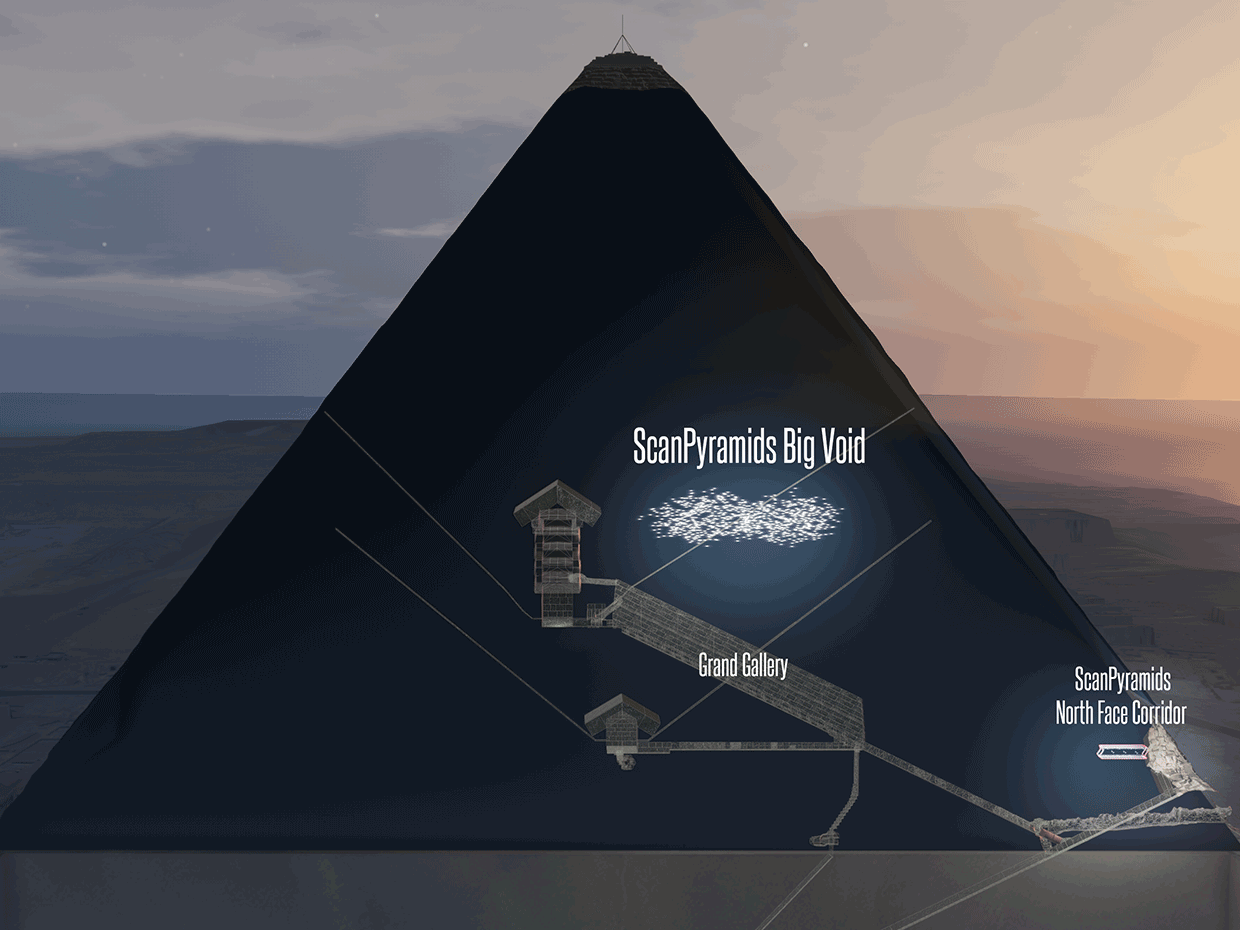Physicists find exciting void
 Particle physicists have unlocked an intriguing ancient Egyptian secret.
Particle physicists have unlocked an intriguing ancient Egyptian secret.
A hidden void in the Great Pyramid at Giza has been discovered by Japanese and French scientists using muon imaging, based on cosmic rays.
The Great Pyramid, or Khufu’s Pyramid, was built during the reign of Pharaoh Khufu (Cheops), who reigned from 2509 to 2483 BC.
There is no consensus on how the monument was constructed, and so to learn more about the internal structure, Mehdi Tayoubi, Kunihiro Morishima and colleagues imaged the pyramid using muons – a by-product of cosmic rays that can penetrate stone.
Muons constantly bombard the Earth's surface, so frequently that a single muon passes through an area the size of a human hand each second.
Hyper-sensitive muon detectors, originally developed for particle accelerators, are now being used to determine the inner structures of volcanoes and to study the damaged nuclear reactor at Fukushima, Japan.
In 2015, the researchers placed a series of detectors inside the Queen’s chamber to detect muons passing through the pyramid from above.
The particles are partially absorbed by stone, so any large holes in the pyramid results in more muons than expected hitting the detectors.
After running the technology for several months, “we had an unexpected line”, says Tayoubi.
Two other teams of physicists, from the Japanese High Energy Accelerator Research Organization in Tsukuba and the French Alternative Energies and Atomic Energy Commission in Paris, were then brought in to double check the results using different types of muon detector placed in other locations both inside and outside the pyramid.
They found the same void.
The researchers’ visualization of the large void using three different muon detection techniques revealed that it is at least 30 metres long, and has a cross section similar to that of the Grand Gallery, which lies beneath the newly discovered void.
The discovery has sent imaginations into overdrive as to what the space may be.
Of course, many want to believe it is full of ancient treasure.
But researchers say the newly discovered space is not likely to contain any artefacts.
Aidan Dodson, an Egyptologist at the University of Bristol, UK, speculates that the space might be a “relieving chamber”, designed to reduce the weight of masonry pressing down on the Grand Gallery below.
Similar relieving chambers have been discovered above the King’s chamber and in the pyramid of Khufu’s father, Sneferu, at Meidum, another pyramid site in Egypt.
However, geologist and engineer Colin Reader says the new chamber is too far from the Grand Gallery to serve this purpose.
He suggested the void might lead to another, higher chamber.
“You would want to investigate and rule that out,” he said.
While the precise structure and role of this void remain unknown, the findings may pave the way for further studies that could help researchers to understand the pyramid and its construction process.







 Print
Print